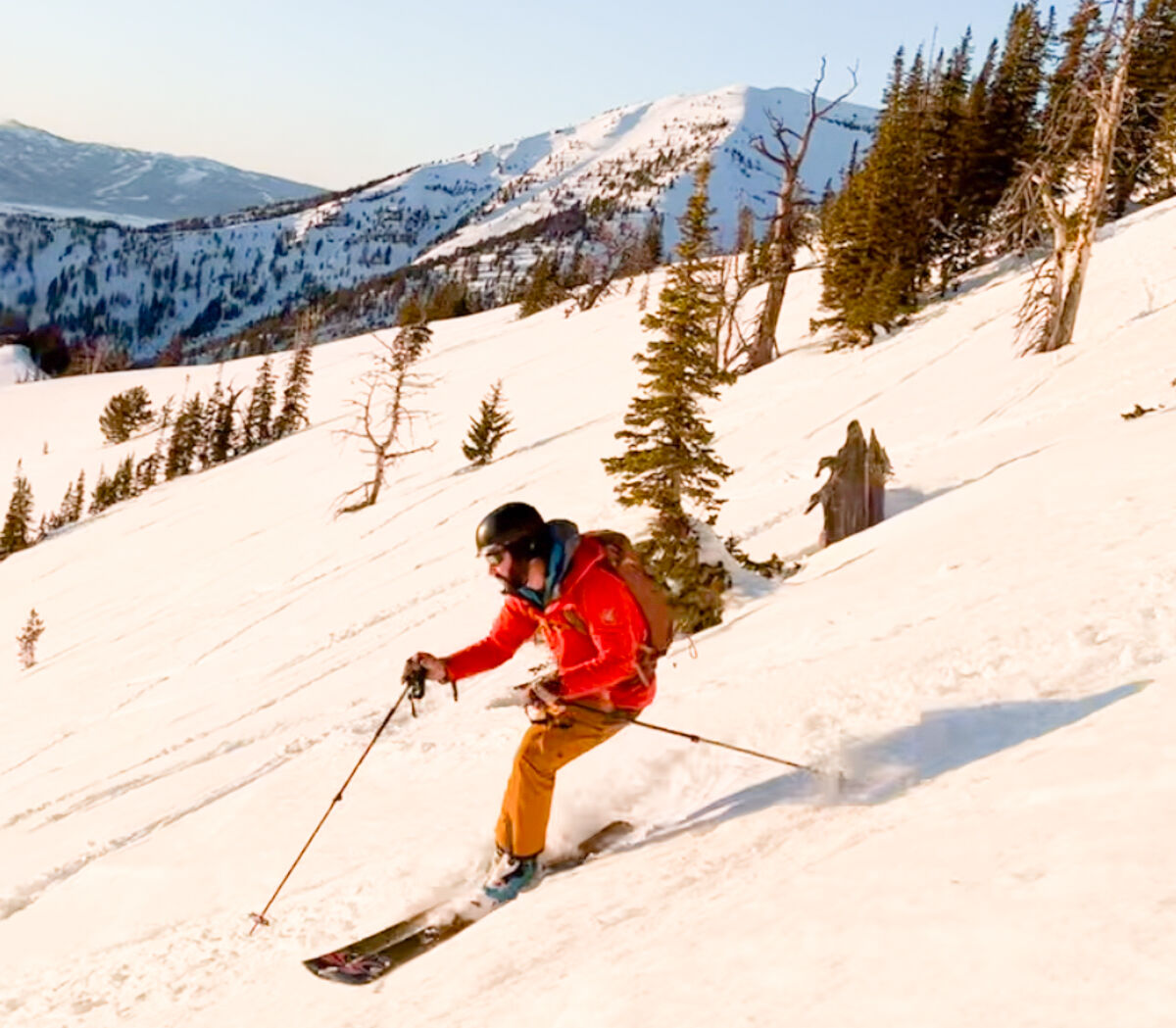Patagonia Descensionist 40L Backpack Review
As a backcountry skier with a penchant for long days out in the mountains, the minimalist, lightweight Descensionist by Patagonia has always been my go to backpack. In need of an upgrade after many years of logging endless vertical in the Tetons, I was thrilled to give the new iteration of this Patagonia classic a try.
First Impressions
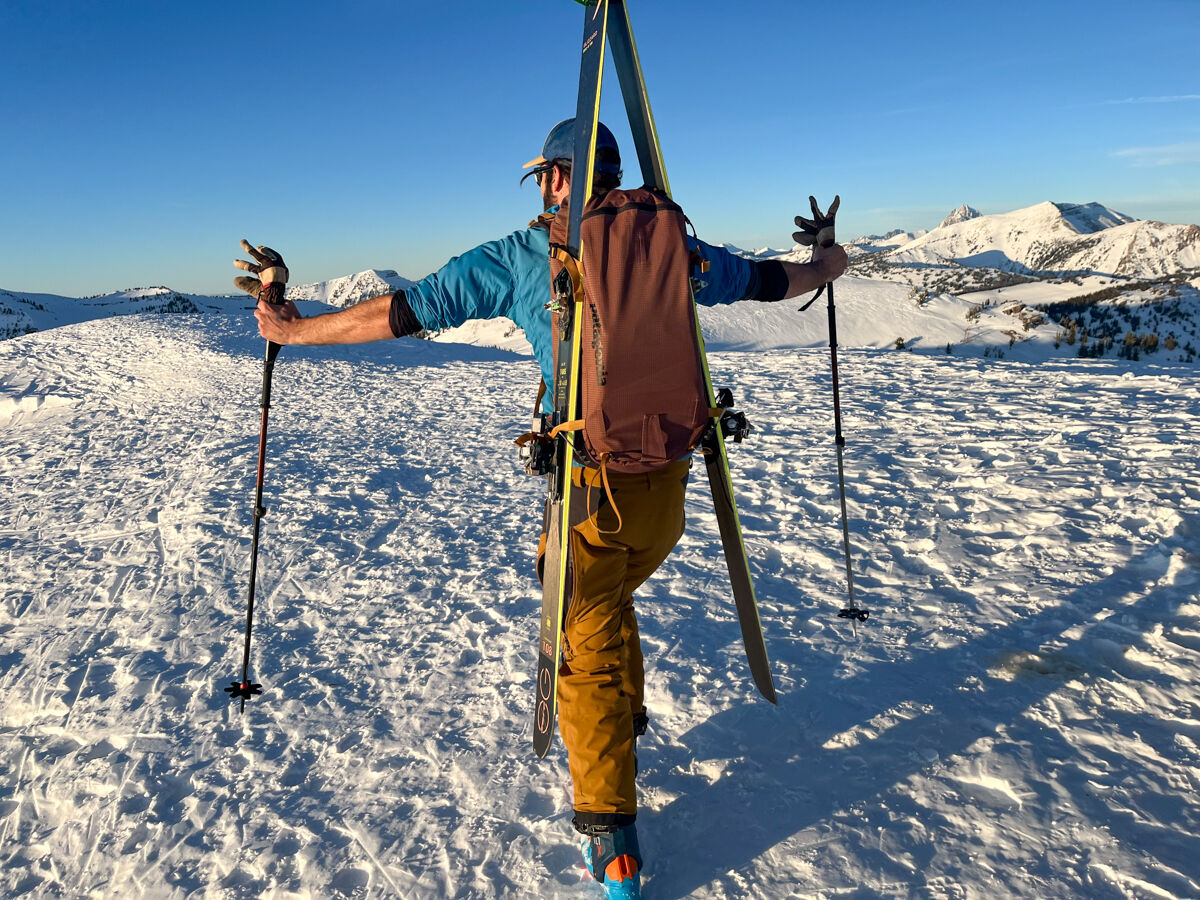
Upon first examination, the once cavernous 40L Descensionist had clearly lost a bit of volume. The new version – at 37L – is a bit smaller, but Patagonia obviously took previous feedback into consideration when deciding where those valuable liters of storage should be found. Of note, the small brain is still just large enough to hold some essentials (think inReach, headlamp, snacks, and goggles), but the hip pads are a major upgrade. Each side now has the ability to comfortably hold a phone – a critical navigation tool in 2025 – and more snacks. The previous hip pockets could barely hold an inclinometer!
Backcountry Ready
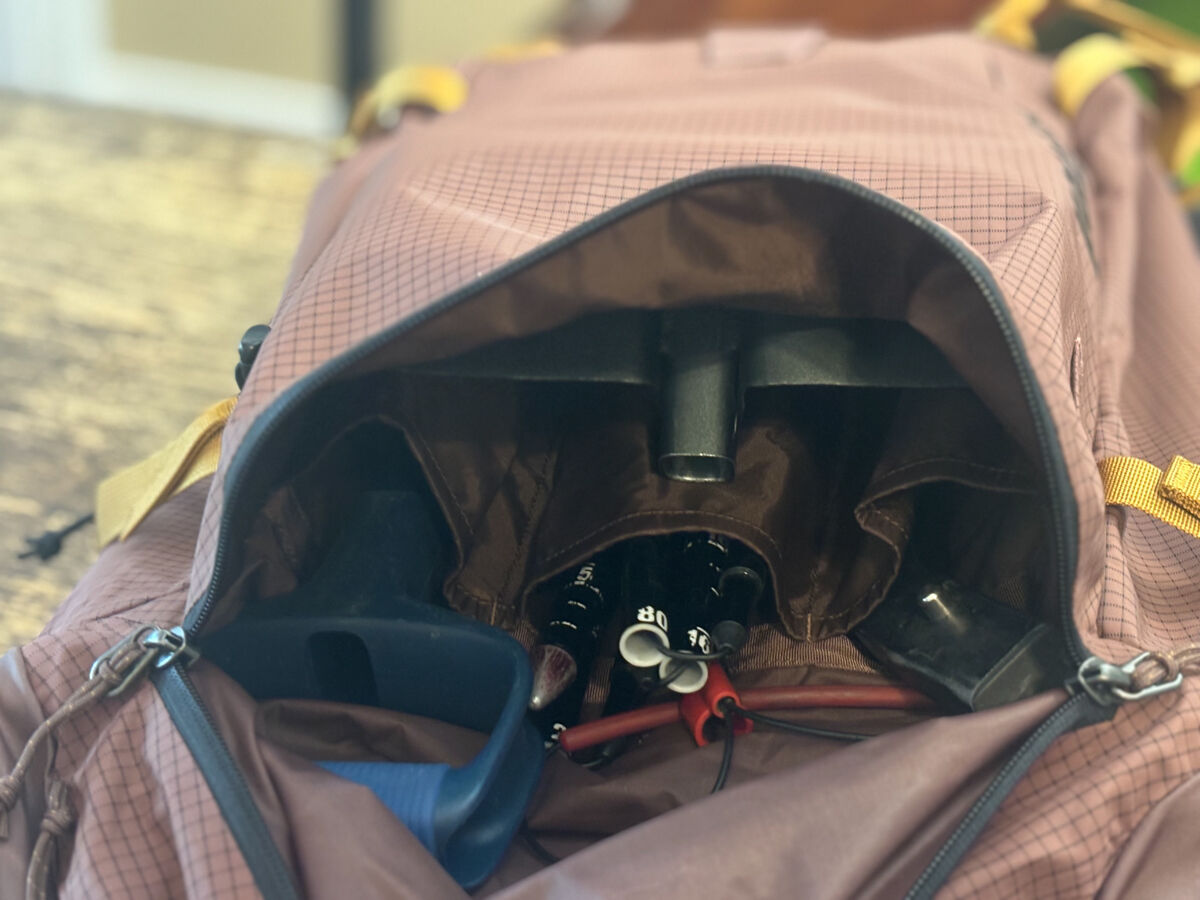
I will always advocate for a separate pouch for avalanche rescue gear and, here again, the Descensionist did not disappoint. This pack boasts separate dividers for your probe and shovel segments as well, a notable upgrade in this compartment.
The previous Descensionist was especially simple in its design, and the new version definitely includes more bells and whistles than before. A removable foam back-pad seems to add comfort and structure, and an optional helmet carry – kept in another small interior zipped pocket – allows riders to add more storage to the interior of the pack by strapping their helmet to the exterior.
A drawstring and hook-and-loop closing mechanism stays true to the original simple pack design, and the material itself feels more durable than previous models.
With all the add-ons and extras, there is a noticeable increase in weight despite the loss of volume. That said there is opportunity to shed ounces (remove the helmet carry, pull the foam backing, etc.) if you hang with the ultralight crowd.
Field Testing
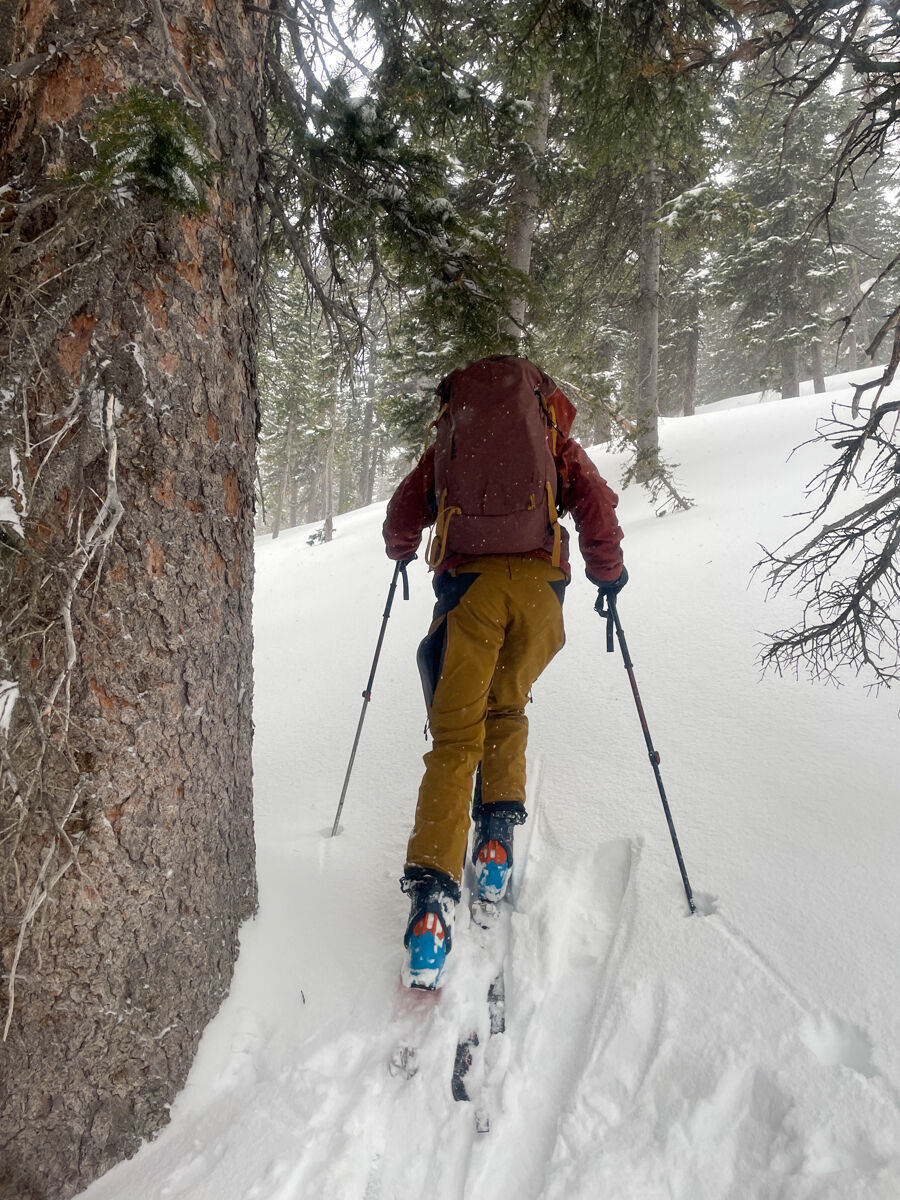
I took this pack on an afternoon walkabout on Teton Pass, including the classic Glory bootpack and a short skin south of Highway 22. I packed the Descensionist to the brim to simulate a big day feel, and I was not disappointed.
The foam backing added a significant amount of comfort on the uphill, as did the wider hip-pads. All straps were easy to adjust and customize to my frame.
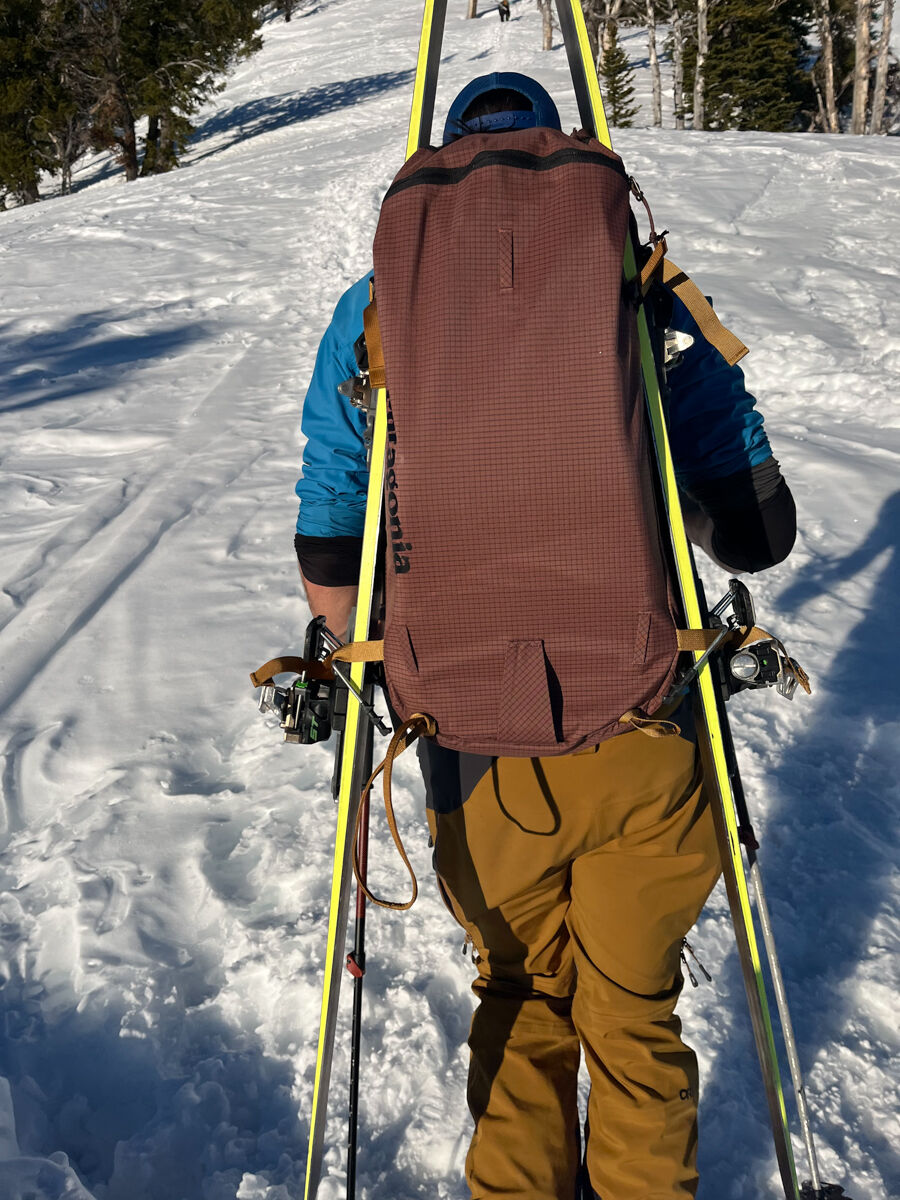
When bootpacking skiers can tote their sticks in either an A-Frame or diagonal carry. I personally always opt for the A-Frame as I appreciate the balance this method offers. The Descensionist was straightforward to configure in this fashion, and the pack’s side zip made for easy access to the pack’s interior even with skis attached.
On the downhill, I found myself appreciating the slimmer profile of this era of Descensionist. Its 40L cousin could get bulky when packed full, and the 37L alternative has a taller and narrower design. This helped the pack stay aligned with my frame, reducing the imbalance that can sometimes occur with larger packs.
Pros & Cons
Pros
- Still a minimalist design
- More usable pockets than previous versions (the hips!)
- Separate rescue gear pocket
- Ease of use and customization
Cons
- Noticeably heavier than its 40L predecessor
- Smaller capacity than I prefer
Overall Impression
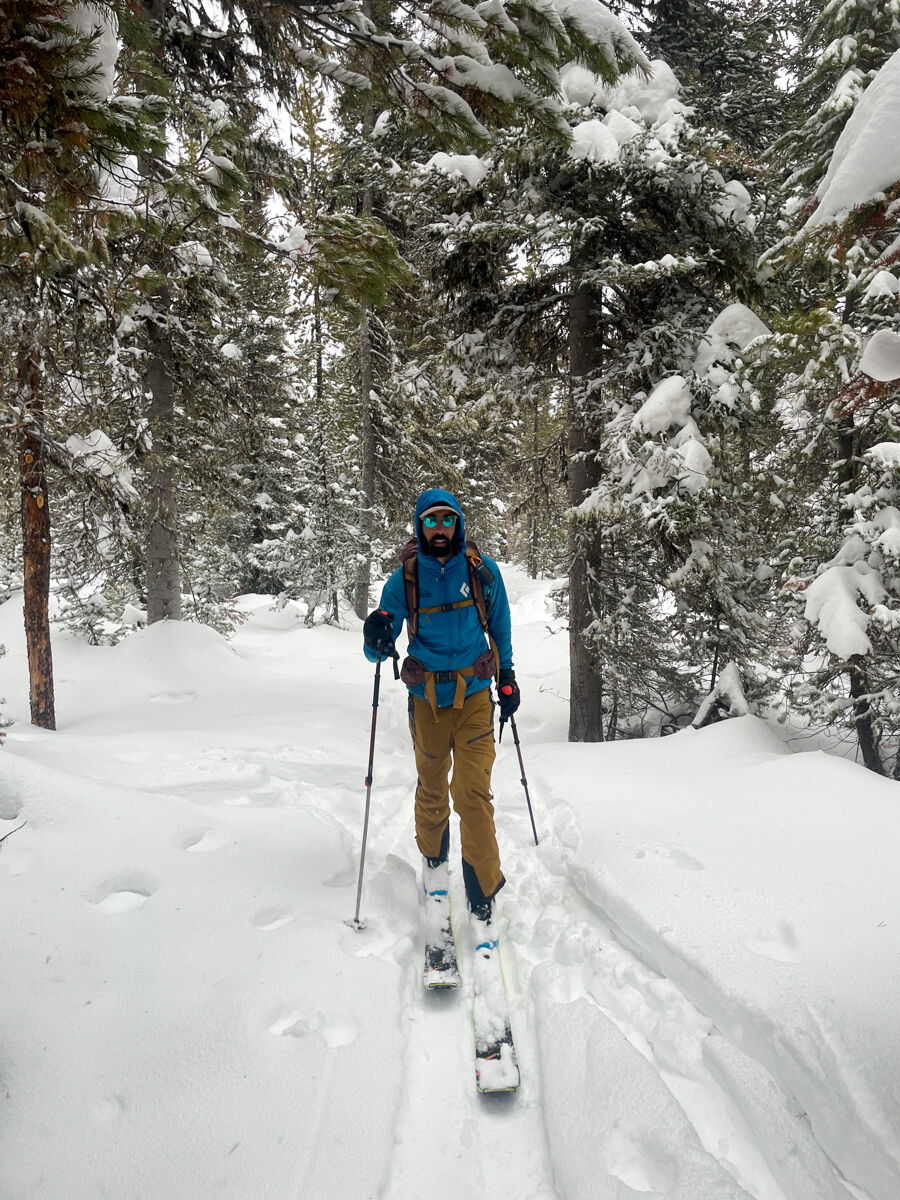
Patagonia took their minimalist backcountry ski pack, subtracted some volume, added some bells and whistles and came away with another excellent piece of touring gear. Although I typically consider 40L packs to be the gold standard for big mountain missions, the Patagonia Descensionist 37L Backpack ($279.00) alternative comes impressively close to meeting those expectations.
Skiers looking for a simple pack with a few added creature comforts – and those who are not in the market for an airbag – will likely find this pack a suitable fit. I may still opt for a larger bag for bigger days but see myself using the 37L rather frequently as well. As a bonus, I see this pack translating especially well for resort days – either inbound or out the gates – given its tall, slender profile.

